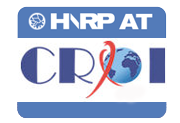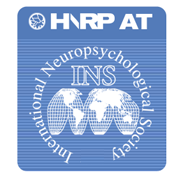Laboratory, Pharmacology & Biomarkers Resource (LPBR) Overview
The LPBR oversees the laboratory components of HNRP-associated projects. Depending on the needs of each individual project, the LPBR collects, processes, stores and makes available for future research, samples of plasma, serum, CSF and CSF cell pellets, urine, and genetic material (e.g. PBMCs). The LPBR coordinates routine clinical laboratory testing of these samples and also provides the HNRP with the capacity to measure ARV medication concentrations, immune mediators, and other biomarkers in CSF and blood. This group also facilitates genetics and genomics studies. Although this work is primarily performed on samples from human research participants, the group also performs some work using animal samples.
Organization
The LPBR is housed within the Neuromedical Resource Group (NMRG). The same leadership team directs the work of the LPBR and NMRG: Dr. Ronald Ellis (NMRG Director), a neurologist with subspecialty expertise in neurobehavior and HIV/AIDS; Dr. Scott Letendre (Co-Director), an infectious disease specialist with expertise in neuroAIDS and Hepatitis C infection; Terry Alexander (NMRG Manager), a clinical research nurse with over ten years of experience in applying neuromedical research methods in local and international settings. Within this NMRG structure, Debra Rosario, MPH, directly manages LPBR activities and staff, including laboratory assistants and research associates trained in phlebotomy and handling biological specimens.
Resources provided
LPBR resources include:
- Personnel trained in the collection and processing of participant-derived samples.
- Laboratory data already collected from HNRP-associated projects (with consents for data sharing) and the ability to obtain new laboratory data through retrospective testing of existing specimens or collection and testing of new specimens.
- Storage and management of more than 500,000 specimens collected from subjects with comprehensive neuromedical and neuropsychological data who have participated in HNRP-associated studies.
- Substantial experience in measuring and interpreting biomarker and pharmacology concentrations in relationship to HIV, methamphetamine abuse and other related conditions.
Scientific Consultation and Trainees
Although scientific consultation and training activities may be laboratory specific, these activities are addressed at the larger NMRG level.
Cross-project Issues
In addition to using NMRG methods for addressing cross-project issues, the LPBR subgroup meets weekly to address all laboratory issues including standardization of assays and methodologies across projects. A meeting focused on pharmacology issues takes place monthly.
Contact the LPBR
For additional information or to access LPBR resources, please contact LPBR manager, Debra Rosario (This email address is being protected from spambots. You need JavaScript enabled to view it.).
LPBR Technical Details
General Procedures
Processing of Participant-Derived Blood and CSF Samples. Specific processes depend upon the details of each research protocol. But in general blood and CSF are collected, processed and separated, and aliquotted for storage or transfer to multiple clinical and research laboratories. Blood, collected by phlebotomist, is sent to UCSD clinical laboratories or Lab Corp (San Diego, CA) for hematology, chemistry, T-lymphocyte subset enumeration by flow cytometry, and HIV RNA quantitation by Roche PCR ultrasensitive assay (lower limit of detection 50 copies per mL). CSF,collected by the physicians or nurses, is sent to UCSD labs for cell count, glucose and total protein measurements, and HIV RNA quantitation. Both blood and CSF can be assayed in-house for ultrasensitive HIV RNA quantitation by Abbott PCR ultrasensitive assay (lower limit of detection 40 copies per mL), rapid screenings of HIV and HCV (Medmira, Nova Scotia, Canada), syphilis (RPR), urine toxicology, and specialty assays such as measurements of drug and biomarker concentrations. Urine specimens are screened for neuroactive drugs at the time of cognitive testing by a 10-panel drug screen card (Rapid Response, Biotechnostix Inc., Markham, Canada) that immediately detects exposures to recreational or prescription drugs.
|
Table 1. Typical sample volumes stored by at each HNRP-associated study visit. Volumes may vary based on the requirements for each study supported by the NMRG. |
|||
|
Sample Type |
Aliquot size x Number |
Approx. Total |
Temp. Stored |
|
Serum |
1.0 x 5 |
5 mL |
-20°C |
|
EDTA Plasma |
1.0 x 10 |
10 mL |
-70°C |
|
PBMCs / DMSO |
1.8 x 2 |
3.6 mL |
-150°C |
|
CSF Supernatant |
0.5 x 6 |
3 mL |
-70°C |
|
CSF Supernatant |
1.0 x 5 |
5 mL |
-70°C |
|
CSF Cells |
0.5 x 3 |
1.5 mL |
-150°C |
Labeling and Tracking. The LPBR carefully tracks all processed specimens. Barcode labels identify precise freezer locations (freezer number, rack number, box number). These codes are tracked by a web-based data entry program, which was designed and developed by the HNRP’s Data Management and Information Systems Resource. Entry of sample data by barcode also facilitates automatic and immediate update of the fluids database; accounting of sample use when a sample is processed or retrieved; and prioritization and appropriate utilization of samples. Disposition of stored fluid samples is readily defined by this tracking system. When aliquots are required for research assays or shipment to collaborators, samples are logged out and the recipient recorded. If a previously removed sample is returned after partial use, it is assigned a new location and its history noted in the database. Thus, this system enables tracking of the history of individual samples.
Specimen Storage. The HNRP Specimen Storage Facility is comprised of -20°C, -70°C, and -150°C freezers that house all HNRP-associated biological specimens. These freezers are monitored 24 hours a day via a computerized validated environmental monitoring system that is capable of automatically phoning key personnel in the event of a power failure or freezer mechanical failure. All freezers have a posting on them listing personnel to call in the event of an emergency. The Standard Operating Procedures outline steps to take in the event of a power failure and/or freezer mechanical failure. All staff and Principal Investigators have been trained to respond to the freezer alarm system and have been given instruction of how to proceed if there is a situation requiring immediate action. Coverage is always designated to account for vacations and holiday schedules.
Participant identification, specimen procurement, labeling and confidentiality. Laboratory or clinical personnel verify the subject’s name, study identifier, visit, and date prior to procuring fluids. Local site personnel clearly label the remaining specimens with this unique identifying information prior to freezing.
LPBR personnel performance. Copies of LPBR personnel training records are maintained. Laboratory personnel record processing times for the fluids obtained from each subject on clinical report forms and monitor these forms periodically to ensure that processing times are within 2 hours from procurement to either shipment or freezing. Efforts are made to avoid unnecessary thawing of specimens and prolonged periods at room temperature since they may adversely affect the integrity of the constituents of biologic samples.
Laboratory instrumentation, reagents, and analytic test procedures. Each clinical lab utilized by the LPBR, whether local or central, is accredited by the College of American Pathologists and or Clinical Laboratory Improvement Amendments. The designated, commercial lab is responsible for maintaining its instrumentation, reagents, and test procedures. UCSD’s Environmental Health and Safety Office monitors intramural research reagents and test procedures. Each lab verifies that they are maintaining calibration and accuracy of their instrumentation.
Turnaround times. Clinical lab results are delivered by the central, commercial lab in electronic format to the LPBR, facilitating easy monitoring of turnaround time.
Accuracy of final results. When aberrant lab results are found, their occurrence is tracked. LPBR personnel also track when such results require repeat processing. Errors are reviewed annually to identify problems with specific assays or procedures and performance of the central, commercial lab.
Complete documentation of all procedures involved in obtaining final analytic results. Documentation is maintained and monitored in a systematic manner by the central lab in the process of QA, it is important to document the effectiveness of quality control measures. The written record of quality control activities for each procedure or function should also include details of deviation from the usual results, problems, or failures in functioning or in the analytic procedure, as well as any corrective action taken in response to these problems.
Additional measures to support quality of processing and uniformity results will include:
- When thawing is necessary for processing, residual volumes that are returned to storage are marked as previously thawed and a notation will be recorded in the database.
- The accuracy of the specimen database is continually tested as groups of samples are withdrawn for specific assays. Inconsistencies (i.e., failure to find a sample in its stated location) are reported and the database promptly corrected.
- Developmental and Pilot Studies. The NMRG maintains a record of pilot studies supported, funded grants utilizing, and publications emerging from provided samples
Laboratory Operations Manual
The LPBR has developed a Laboratory Operations Manual as a resource for Laboratory Assistants and Clinical Research Assistants that includes general policies and guidelines pertaining to personnel, standard operating procedures and QA. Specifically, the Operations Manual highlights key elements of the Biomarkers Laboratory with regard to Assay Protocols, Data Collection and Analysis, Business and Administration and an extensive QA Program that includes validation, certification and evaluation of procedures, equipment and personnel.
Biomarker Quality Assurance (QA)
The Biomarker QA program incorporates several elements, including verification of specimen labeling; tracking of laboratory personnel performance; certification of laboratory instrumentation, reagents, and analytic test procedures; assessing precision and accuracy of final results; entry of final results into the central database; and complete documentation of all procedures involved in obtaining final analytic results. To assess precision of our methods, we assay specimens in duplicate, repeating measurements that have coefficients of variation greater than 20% (~5% of assays), and repeating 10% of all biomarker assays to assess operator and batch consistency.








